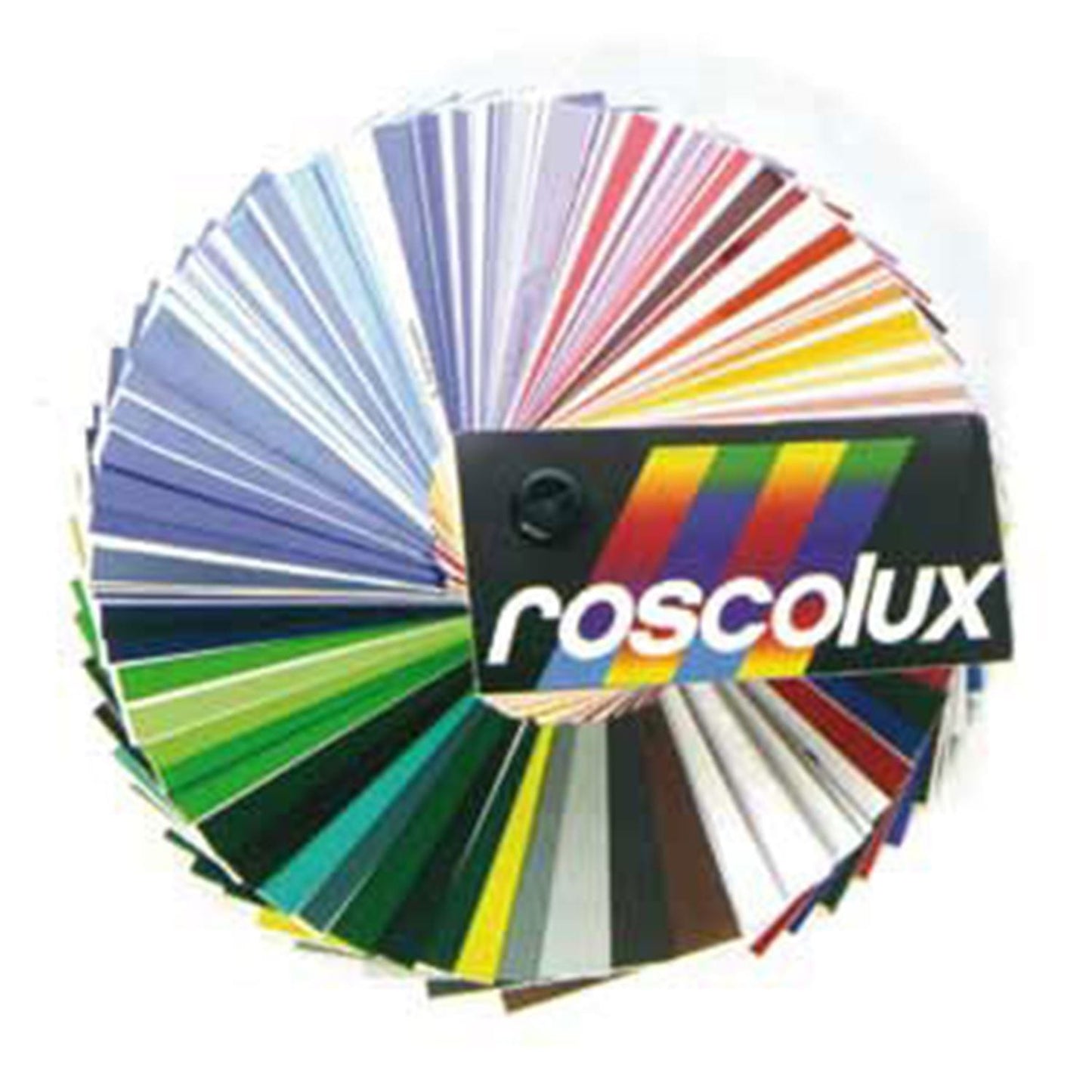Rosco Color Sampler Swatchbooks are available by clicking here.
Roscolux Pro Color FiltersRosco's premier range of color filters, Roscolux, is manufactured using a unique technology to insure the longest possible life under hot theatrical lights. Roscolux Professtional Color Filters are the most widely used in the world. They come in 20-inch x 24-inch sheets (50cm x 61cm) that are normally affixed in holders or color frames in front of the lens and change the color of light in architectural or theatrical fixtures. Roscolux gels have the widest range of color filters used by lighting designers and theatres throughout the world. Each gel is comprised of two types of plastics, polycarbonate and polyester. Not all dyes and plastics are compatible; therefore Roscolux utilizes both plastics to achieve maximum performance. More than 70% of the Roscolux line is made from co-extruded polycarbonate plastic, the remainder of the filters is deep-dyed polyester.
The Rosco swatchbook provides detailed information on the spectral energy curve of each filter. The curve describes the wavelengths of color transmitted through each filter. For example, Roscolux 342 transmits approximately 40% of the violet and blue energy of the spectrum and 75% of the orange and red energy. It absorbs all energy in the yellow and green range. Rosco swatchbooks are available by clicking here.
How Color Filters WorkFilters create color by subtracting certain wavelengths of color. Thus, a red filter absorbs blue and green, allowing only the red wavelengths to pass. The process is subtractive, not additive, so the light source must emit a full spectrum.
DurabilityThe life of color filters depends on many variables: the color, the instrument and lamp used, the dimmer level a filter generally runs at, and the amount of time the light is running. For these reasons it is impossible to assign a "life" for each filter. However some basics knowledge and experience can help with estimates. Dark green and dark blue filters usually burn out the fastest because they absorb the most infrared energy. Absorbing the extra infrared energy causes the plastic to reach it's melting temperature faster. When darker filters are needed try choosing filters that transmit high amounts of the 700 nm range. You can find this information by looking at the Spectral Energy Distribution (S.E.D.) curve located in the swatchbook for each Roscolux color filter. Filters than transmit high levels at 700 nm may also transmit high levels in the infrared range above 700 nm.(See the Roscolux swatchbook for information on how to read S.E.D. curves.)




